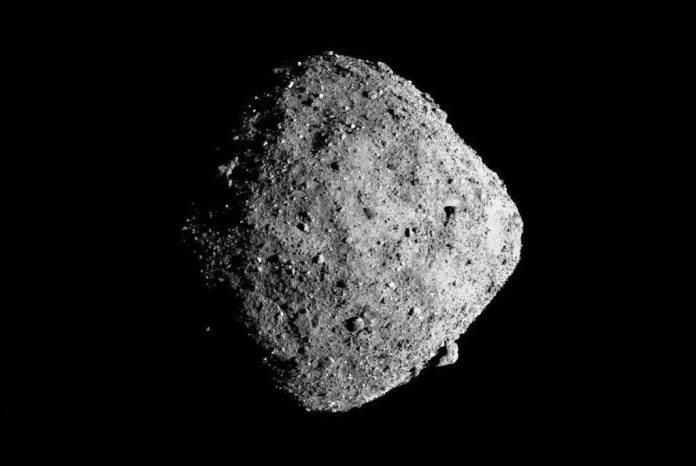This mosaic image of asteroid Bennu is composed of 12 images taken by the OSIRIS-REx spacecraft from … [+]
NASA/Goddard/University of Arizona
As wide as The Eiffel Tower is tall, the asteroid Bennu is a potentially hazardous object, ranked third on the Sentry list of potential future Earth impact events. There’s a chance—albeit small—that it could strike Earth on September 24, 2182. If that happens, it could set off a chain of events that include a global winter and a planet-wide drought, according to new modeling by scientists.
Until last week, Bennu was second on the Sentry list. It was pushed farther down the discovery of asteroid 2024 YR4, which has a 1.3% chance of striking Earth on Dec. 22, 2032, triggering planetary defense groups at the United Nations.
Bennu: Size And Chance Of Impact
Bennu is a medium-sized asteroid. According to NASA, Bennu is about one-third of a mile (half a kilometer) wide at its equator. That’s far smaller than the six-mile (10-kilometer) wide behemoth that struck Earth 66 million years ago and created the Chicxulub crater, killing the dinosaurs. There’s also only a 1-in-2700 chance of impact in 2182.
However, if there is a collision with Earth, Bennu could significantly disturb the planet’s atmospheric and ecological balance. The new research, published today in Science Advances, conducted by Lan Dai and Axel Timmermann, used advanced Earth system and atmospheric chemistry models to simulate the aftermath of such an impact.
Bennu: Worst-Case Scenario
According to the new research, the worst-case scenario involves 400 million tons of dust, aerosols, debris and ash being injected into Earth’s atmosphere after a collision with Bennu. This could trigger a cascade of climatic disruptions, starting with a drop in ozone by 32%, a global temperature drop of 4 degrees Celsius and a 15% reduction in rainfall. These conditions would likely lead to an “impact winter,” preventing photosynthesis in planets, with cascading effects on food production and ecosystems. In that scenario, crop yields would be reduced by a third and fishing by a quarter.
Other scenarios include an impact with Bennu causing iron-rich dust, which could mean diatoms—single-cell organisms—blooming in the eastern equatorial Pacific and Southern Ocean for three years post-impact.
“Asteroid impacts have taken place many times in Earth’s history. Our early human ancestors may have experienced some of these planet-shifting events before with potential impacts on human evolution and even our own genetic makeup,” said Lan Dai, the paper’s co-corresponding author. “This study provides the basis to quantify the possible effects of abrupt events on early human evolution.”
Bennu: Evidence For Life?
Bennu is a rubble pile asteroid entirely made up of fragments of boulders and dust particles ejected during the destruction of a much larger asteroid. It’s long been studied, most recently by NASA. In September 2023, the space agency’s OSIRIS-REx mission successfully returned 122 grams of dust and rock from Bennu to Earth, collected during a brief surface maneuver in 2020. Analysis by over 40 institutions worldwide revealed that it contains a mix of life’s ingredients, with 14 of the 20 amino acids that life on Earth uses to make proteins, as well as all five nucleobases that life on Earth uses to store and transmit genetic instructions in DNA and RNA.
“Asteroids provide a time capsule into our home planet’s history, and Bennu’s samples are pivotal in our understanding of what ingredients in our solar system existed before life started on Earth,” said Nicky Fox, associate administrator, Science Mission Directorate at NASA Headquarters in Washington, ast week.
Wishing you clear skies and wide eyes.




